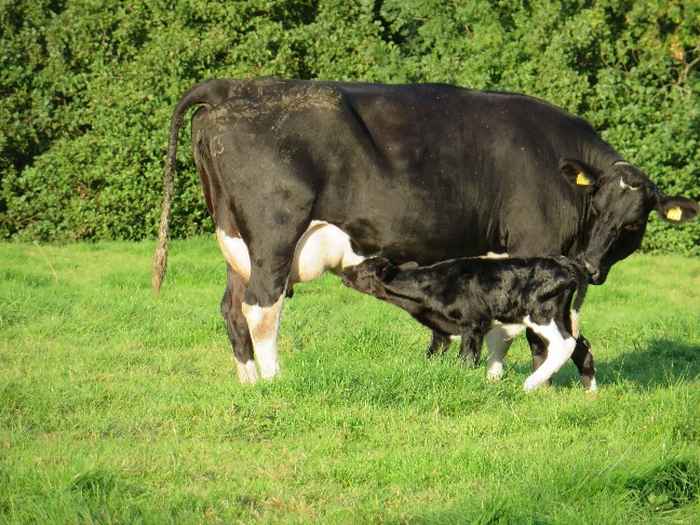On behalf of the Mesdag Zuivelfonds, researchers from the University of Amsterdam have measured within which radius around dairy farms the nitrogen emitted by the farm is deposited. By far the largest part of the emitted nitrogen (≈ 90%) ends up in higher air layers of the atmosphere and will precipitate elsewhere. Within the measured area, with a radius of 500 meters around the farm, most of the remainder (≈ 10%) precipitates within a radius of 100 meters. These results are in accordance with previous research and the models from the Dutch RIVM (National Institute for Public Health and the Environment).

The University of Amsterdam (UvA) was asked to conduct this research in response to questions from farmers' organizations regarding the spatial distribution of various nitrogen sources (agriculture, traffic, aviation) in the nitrogen deposition models used by the Dutch authorities. The research focused on two dairy farms. One farm was located in a more urban area, with a lot of traffic in the area; the other was more isolated and in a rural area.
Highest deposition on farmyard
Several sub-studies have been carried out under the leadership of Albert Tietema of the UvA's Institute for Biodiversity and Ecosystem Dynamics (IBED). He and his colleagues used both existing methods to measure nitrogen deposition and a couple of new, experimental methods, including the use of bio-indicators. Together, these methods provided a clear picture.
Only 9% of the nitrogen emitted by a farm ends up within a radius of 500 meters from the stable. At that distance, the farm's contribution has fallen to a quarter of the total nitrogen concentration in the air and to a fifth of the nitrogen deposition. Within these 500 meters, nitrogen deposition decreases exponentially as the distance from the farm increases. Nitrogen that precipitates in the vicinity of the farm is mainly deposited on the farmyard itself, within a radius of 100 meters around the farm.
Nitrogen blanket
Nitrogen is also deposited outside 500 meter radius, but at this distance, an individual farm can no longer be identified as the most important source. Nitrogen that precipitates here mainly comes from the so-called 'nitrogen blanket'. That term refers to the total nitrogen in the atmosphere that covers our country like a blanket, and that comes from a multitude of both agricultural and industrial sources.
Model and measurements
According to the researchers, their results are in line with other studies. The team also compared how well their findings correspond with the predicted spatial distribution of nitrogen deposition around the farms based on the RIVM's OPS model. The model appeared to slightly underestimate how much nitrogen ends up within 15 meters of a stable, but beyond that the predictions appeared to agree well with the direct measurements. Tietema: 'We saw that the predictions became more accurate as more characteristics of the specific farm were included in the model, instead of based on a standard model farm. For example, the number and size of the openings through which nitrogen emissions occur is an important factor to take into consideration.'
Methods
The following methods were used in the various sub-studies:
- Biweekly measurement of ammonia concentration in the air with filters fitted with an acid that captures ammonia
- A funnel/bottle system to determine precipitation of nitrogen such as ammonium and ammonia (wet deposition and part dry deposition)
- Sampling of wet deposition only, consisting a funnel/bottle fitted with a lid that opens when it rains
- New method: automated flux chambers that almost continuously measure ammonia exchange between plants and the atmosphere, for example also after fertilization
- New methods: bio-monitors such as special ryegrass, locally present mosses and algae present in ditches. Dry mass increase is a measure of nitrogen deposition and the ratio of isotopes of nitrogen is an indication of the type of nitrogen source.






